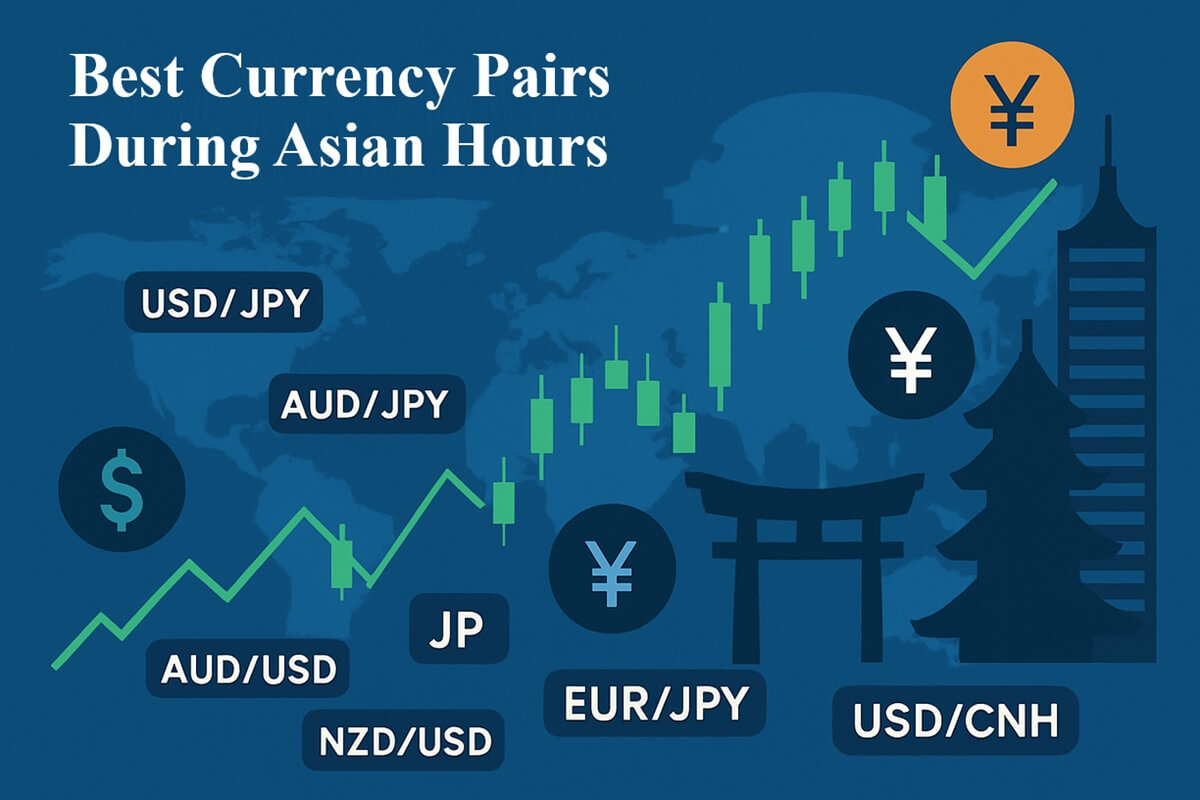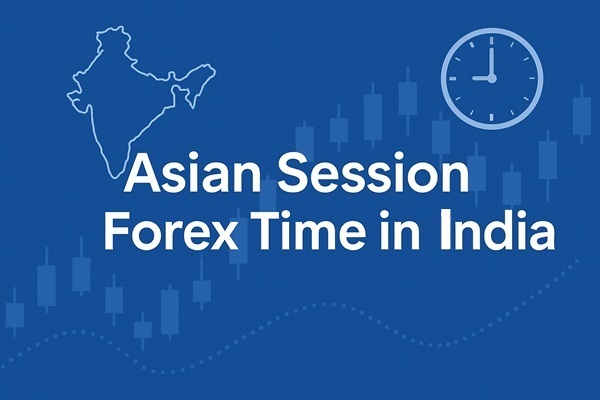In the world of forex trading, timing is everything. With markets operating 24 hours a day, knowing when to trade is just as crucial as knowing what to trade. For Indian traders, the Asian session—which marks the start of the global trading week—often goes underutilised compared to the more volatile London or New York sessions. Yet, it offers distinct advantages that align well with the Indian time zone.
Running during the early hours of the day in India, the Asian session provides a structured environment with lower volatility, tighter spreads, and steady price action—especially in pairs like USD/JPY, AUD/USD, and NZD/JPY. It's a time when key Asia-Pacific markets come to life, offering valuable early signals and entry points for technically inclined traders.
Whether you're trading full-time or looking to make the most of your mornings, the Asian session holds strategic value for those who understand its rhythm.
What Is the Asian Forex Session?

The Asian trading session refers to the period during which major financial centres in Asia—primarily Tokyo, but also Hong Kong, Singapore, and Sydney—are active participants in the forex market. This session typically sets the tone for the trading day, establishing early trends, consolidations, and sentiment.
Though not as volatile as the European or North American sessions, the Asian session provides stable market conditions, ideal for traders who prefer technical setups and steady price action over high-risk volatility. This session is particularly important for currencies tied to the Asia-Pacific region, such as the Japanese Yen (JPY), Australian Dollar (AUD), and New Zealand Dollar (NZD).
The Tokyo session often experiences increased liquidity and price movement at the open, especially when economic data from Japan or China is released.
Asian Session Forex Time in India: Exact Hours in IST
Indian forex traders frequently ask: "What time does the Asian (or Tokyo) session start and end in Indian time?"
The Tokyo market is active from 9:00 AM to 6:00 PM Tokyo time, which translates to:
5:30 AM to 2:30 PM IST
This makes the Asian session particularly relevant for Indian traders who prefer early morning or mid-morning trading activity.
Key Timings:
Session Begins (IST): 5:30 AM
Session Ends (IST): 2:30 PM
Most Active Period: 5:30 AM – 9:30 AM IST (overlap with Sydney session)
News Releases Window: 5:30 AM – 8:00 AM IST (Japan, Australia, China)
Markets in Singapore and Hong Kong open slightly later (6:30 AM IST), but remain active until around 2:30 PM IST as well. Importantly, India does not observe daylight saving time, so these hours remain consistent year-round.
The early start of the Asian Session in India is well-suited to Indian traders who prefer to analyse markets and place trades before the start of the traditional workday.
Other Asian Markets (Hong Kong, Singapore, Sydney) in IST
While Tokyo is the flagship market for the Asian session, trading activity also stems from other major financial centres:
Key Asian Session Forex Time in India
| Market Centre |
Local Hours (GMT+8/9) |
IST Equivalent |
| Tokyo |
9:00 AM – 6:00 PM |
5:30 AM – 2:30 PM |
| Hong Kong |
9:00 AM – 5:00 PM |
6:30 AM – 2:30 PM |
| Singapore |
9:00 AM – 5:00 PM |
6:30 AM – 2:30 PM |
| Sydney |
7:00 AM – 4:00 PM |
2:30 AM – 11:30 AM |
These overlapping timeframes broaden the trading window and enhance liquidity, particularly in the first half of the session. For example, when Tokyo and Sydney are open concurrently, traders see the most consistent movement in JPY, AUD, and NZD pairs.
Liquidity & Volatility Patterns during the Asian Session Forex Time in India
Understanding the Asian Session Forex Time in India can offer significant advantages, particularly for traders who favour morning activity, technical strategies, and stable market behaviour.
Liquidity
Liquidity during the Asian session is generally lower than during the London or New York sessions, but that does not mean the market is illiquid. Currency pairs associated with the Asia-Pacific region see healthy volume, and institutional traders often enter positions early in the trading day.
Volatility
Price movement tends to be less volatile and more technical during the Asian session. This makes it suitable for range-bound or low-volatility trading strategies.
Key Features:
Lower spreads in regional currency pairs
Fewer market shocks (unless economic news is released)
Range-bound movement dominates early session hours
Gradual breakouts may occur toward the end of the session
What to Expect:
5:30 AM – 7:30 AM IST: Quiet open, except on major data release days
7:30 AM – 10:00 AM IST: Peak activity as Tokyo, HK, Singapore are all active
10:00 AM – 12:30 PM IST: Volatility flattens; ideal for range strategies
12:30 PM – 2:30 PM IST: Liquidity tapers off before the European open
Best Currency Pairs for the Asian Session in India

Trading the right currency pairs is essential during the Asian session. Traders should focus on currency pairs that are active in their respective regional centres.
Most Active Pairs:
USD/JPY – Most traded pair in Asia; highly liquid and technical
AUD/JPY – Volatile and responds to Chinese news/events
NZD/JPY – Follows similar dynamics to AUD/JPY
AUD/USD – Influenced by Asian commodity and equity markets
NZD/USD – Often shows quiet, technical movements
EUR/JPY / GBP/JPY – Provide volatility and cross-market correlation
USD/CNH (offshore yuan) – Reacts to Chinese economic data
These pairs offer tight spreads, predictable price action, and are heavily traded during the Asian hours, making them ideal for short-term traders and scalpers in India.
Strategies for Indian Traders During the Asian Session
For Indian forex traders, the Asian session offers unique advantages and demands a tailored approach. Here's how you can optimise your trading routine:
Plan Your Day Around the Session
Wake early if possible: the market opens at 5:30 AM IST
Monitor pre-market sentiment from the US close
Check economic calendars for events in Japan, Australia, China
Use Technical Strategies
The session's low volatility is ideal for:
Range trading: Identify support/resistance and trade inside the channel
Breakout strategies: Watch for consolidation near key levels
Moving averages & Bollinger Bands: Effective due to slow trend formation
Monitor Key Data Releases
Asian session news that can move markets:
Bank of Japan announcements
Australian employment reports
Chinese trade balance, GDP, PMI
New Zealand interest rate decisions
Avoid Common Pitfalls
Don't overtrade in illiquid time zones (e.g., post-Asian, pre-European)
Avoid exotic pairs unless spreads are acceptable
Be cautious around low-volume spikes triggered by thin markets
Conclusion
The Asian Session Forex Time in India represents more than just the first hours of the trading day—it is a strategic opportunity window for Indian traders seeking structure, discipline, and efficiency in their approach. By understanding the specific session timing, focusing on active pairs, and applying session-appropriate strategies, traders in India can benefit from this often-underappreciated period.
Whether you're a beginner or a seasoned trader, mastering the Asian session can give you a decisive edge. By focusing on the right currency pairs, using disciplined strategies, and aligning your routine to its unique market behaviour, you can unlock consistent opportunities from the moment the global markets open.
Disclaimer: This material is for general information purposes only and is not intended as (and should not be considered to be) financial, investment or other advice on which reliance should be placed. No opinion given in the material constitutes a recommendation by EBC or the author that any particular investment, security, transaction or investment strategy is suitable for any specific person.




























